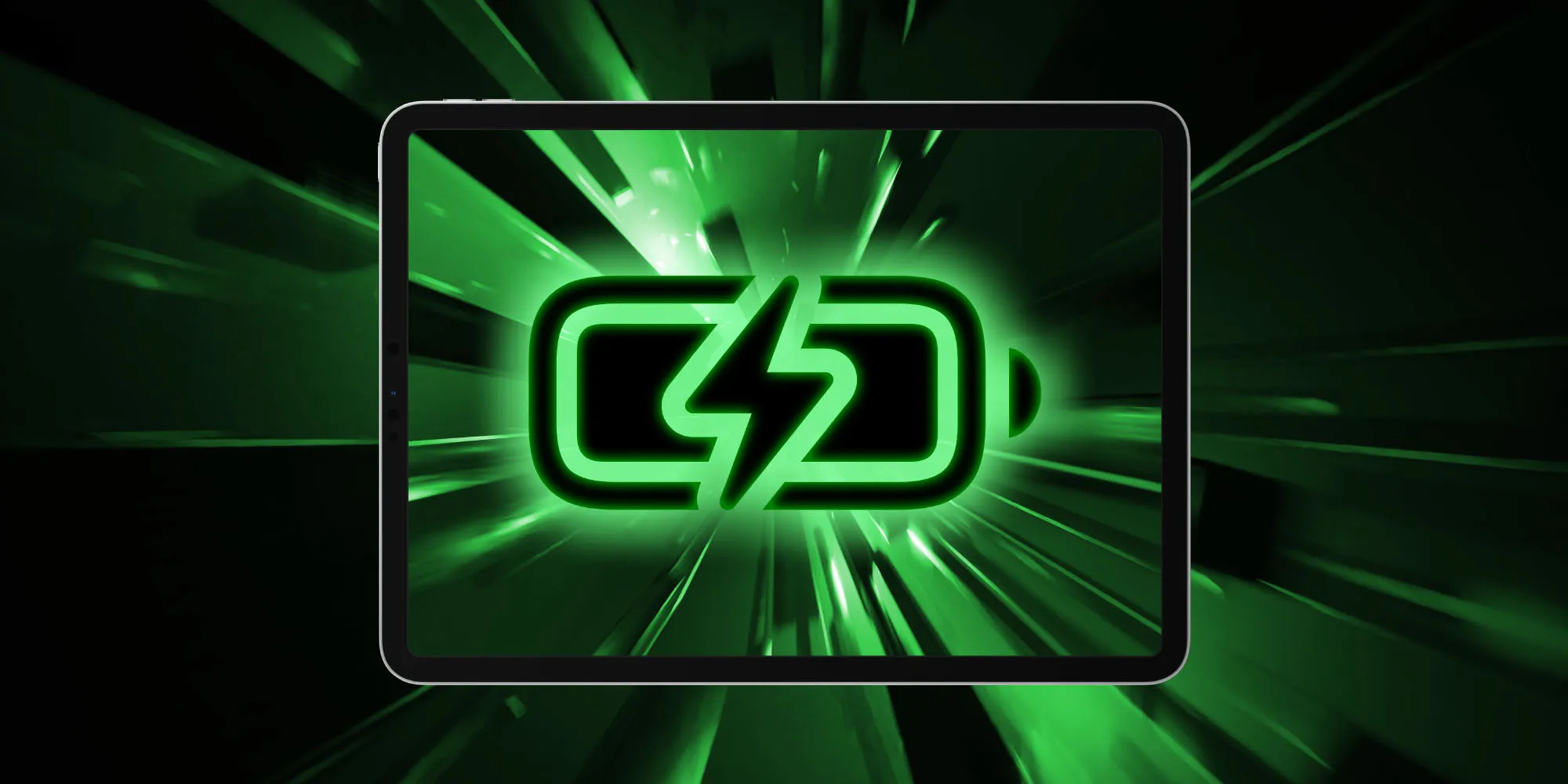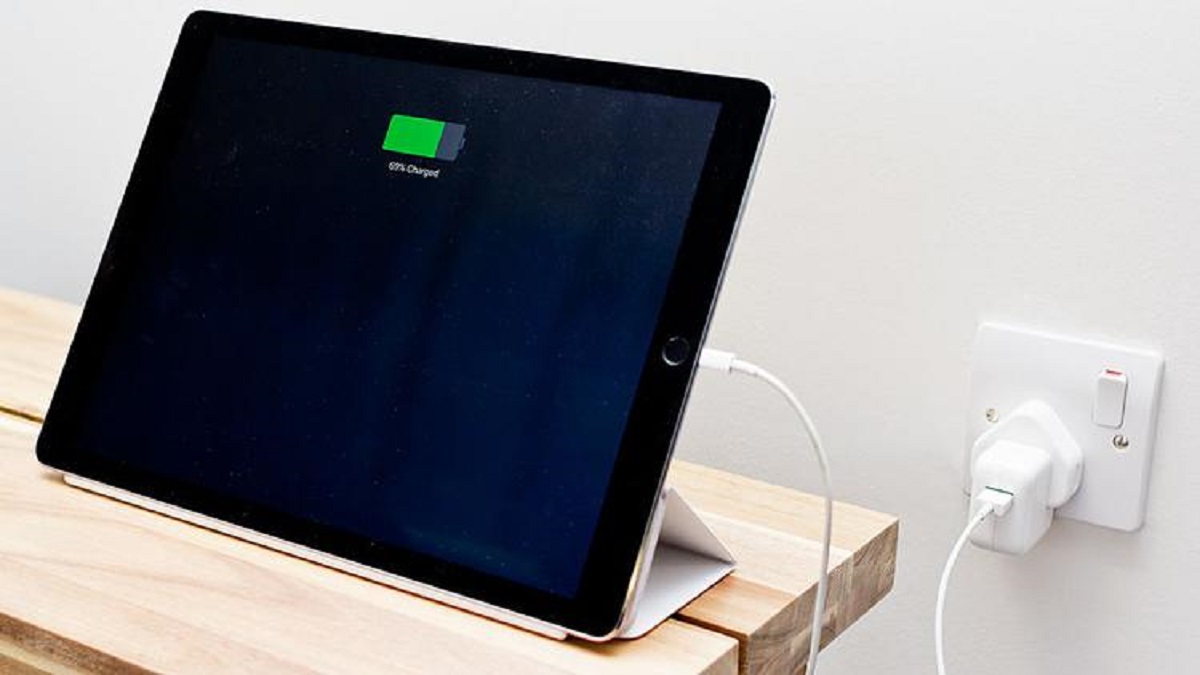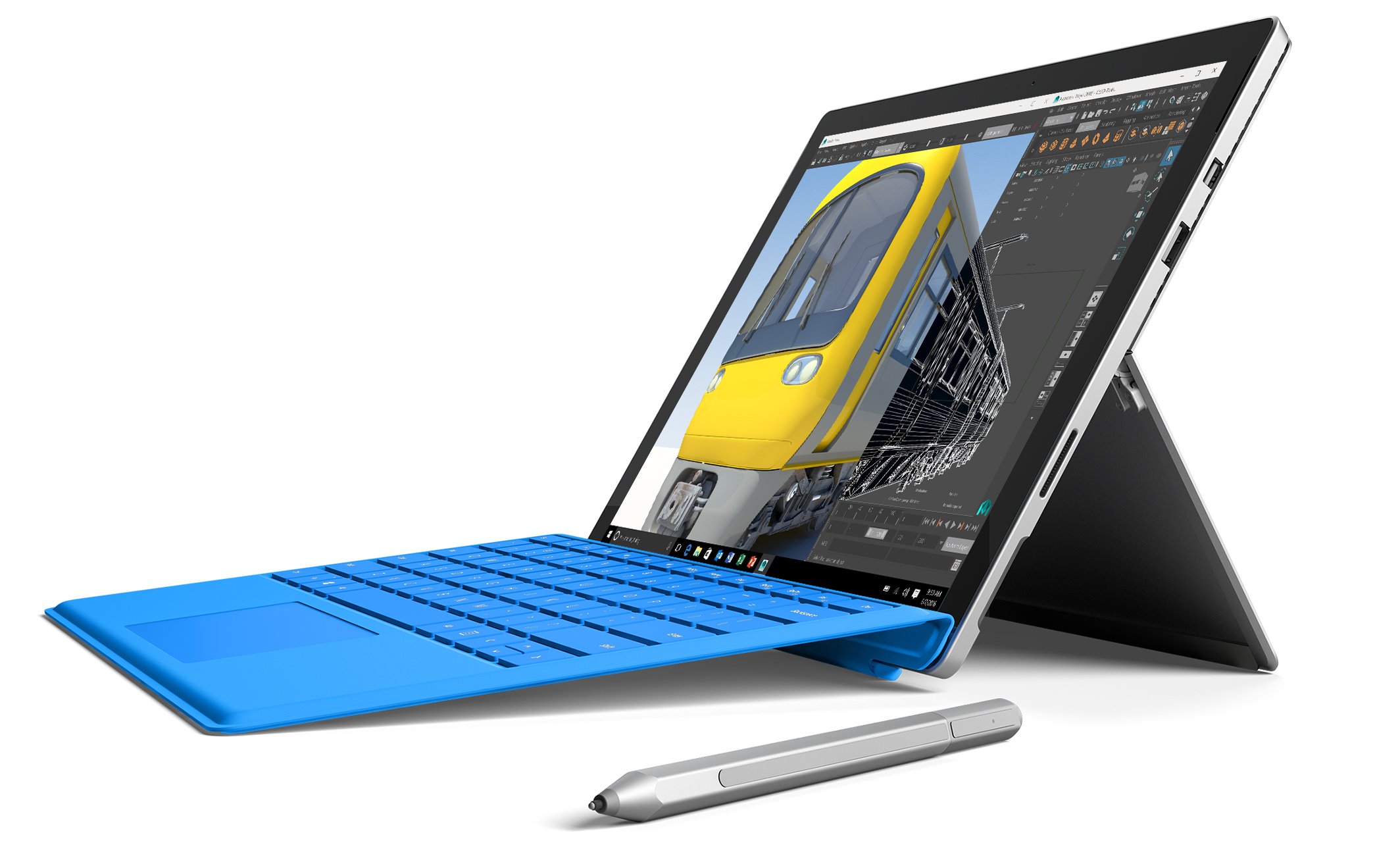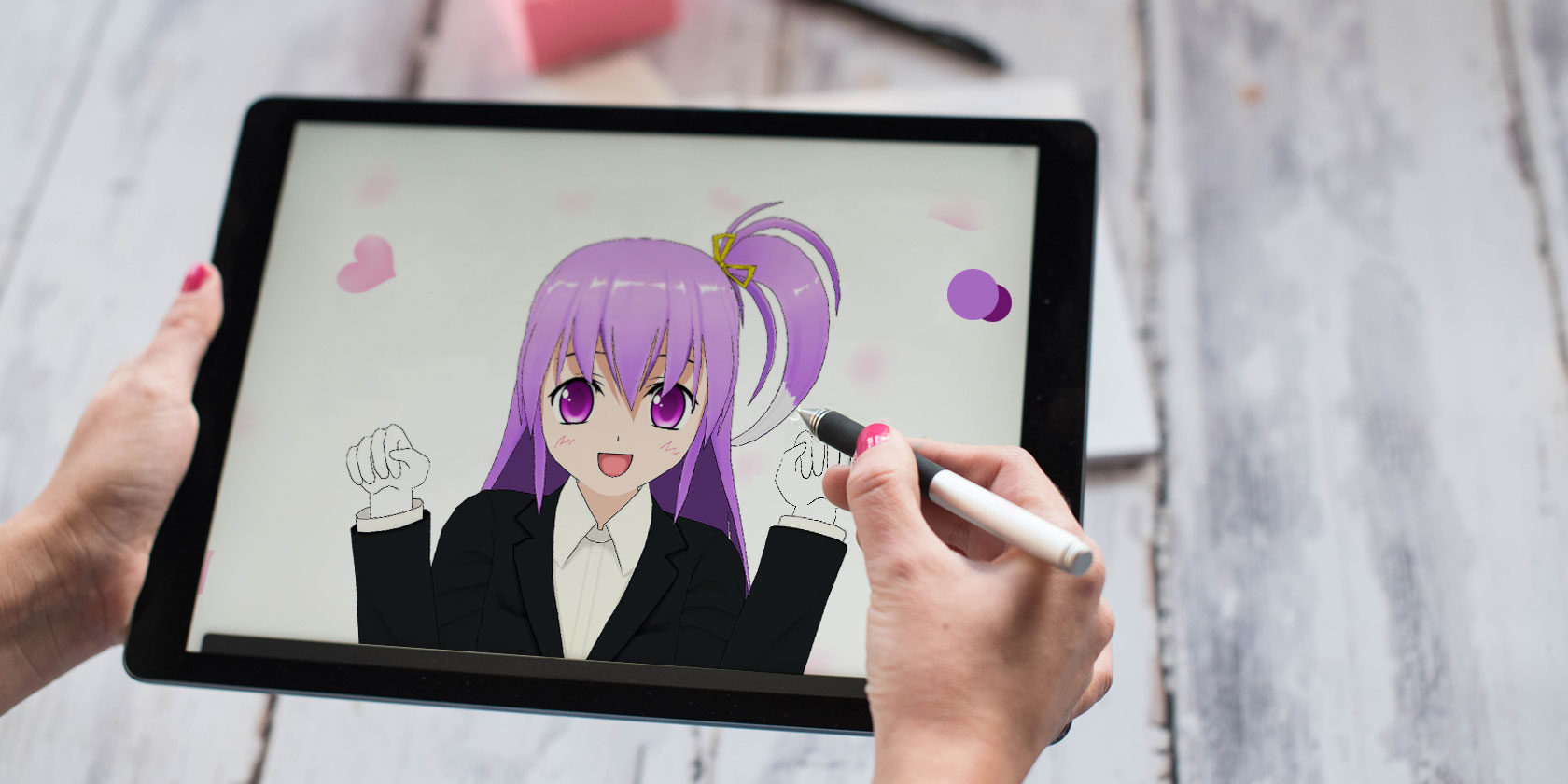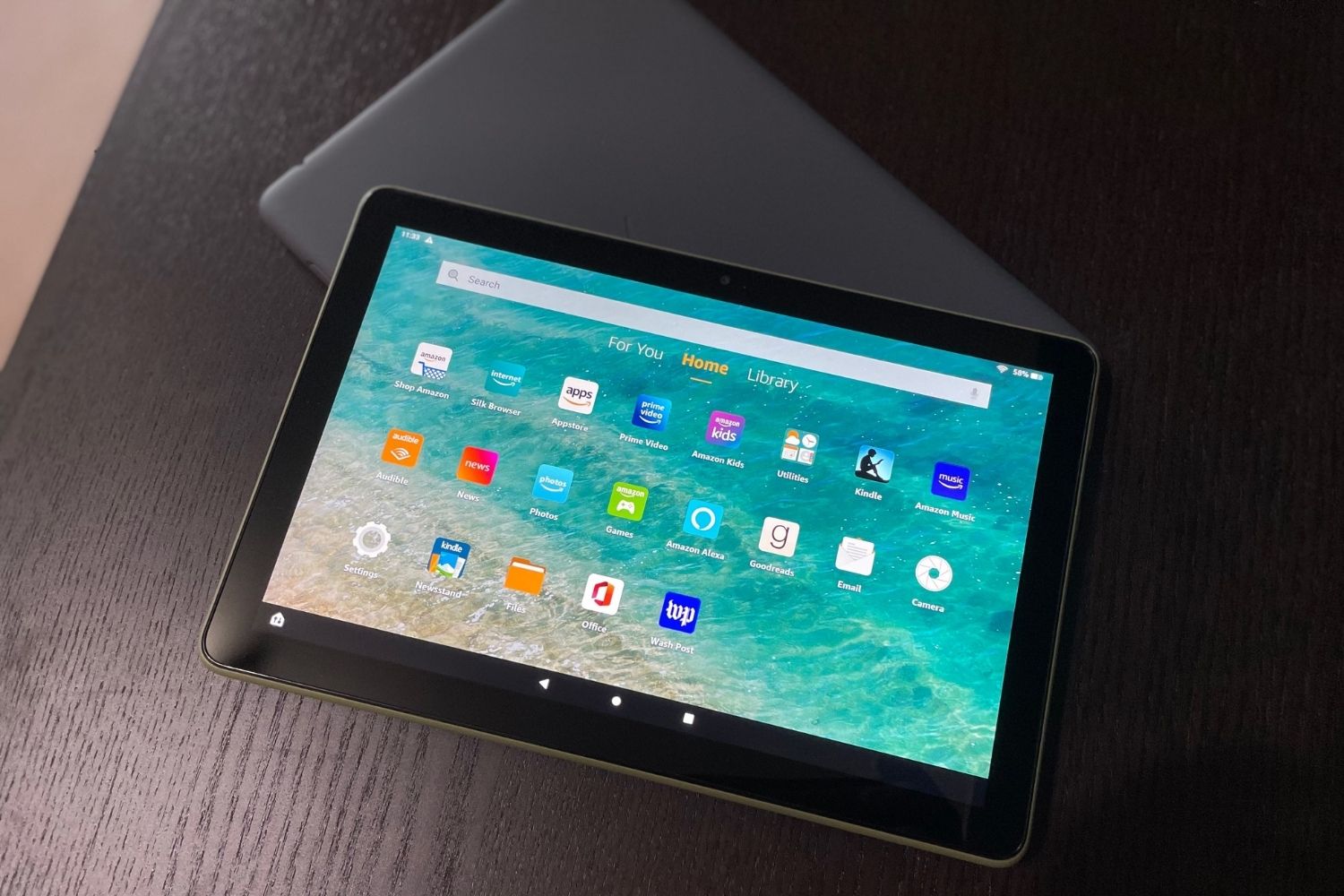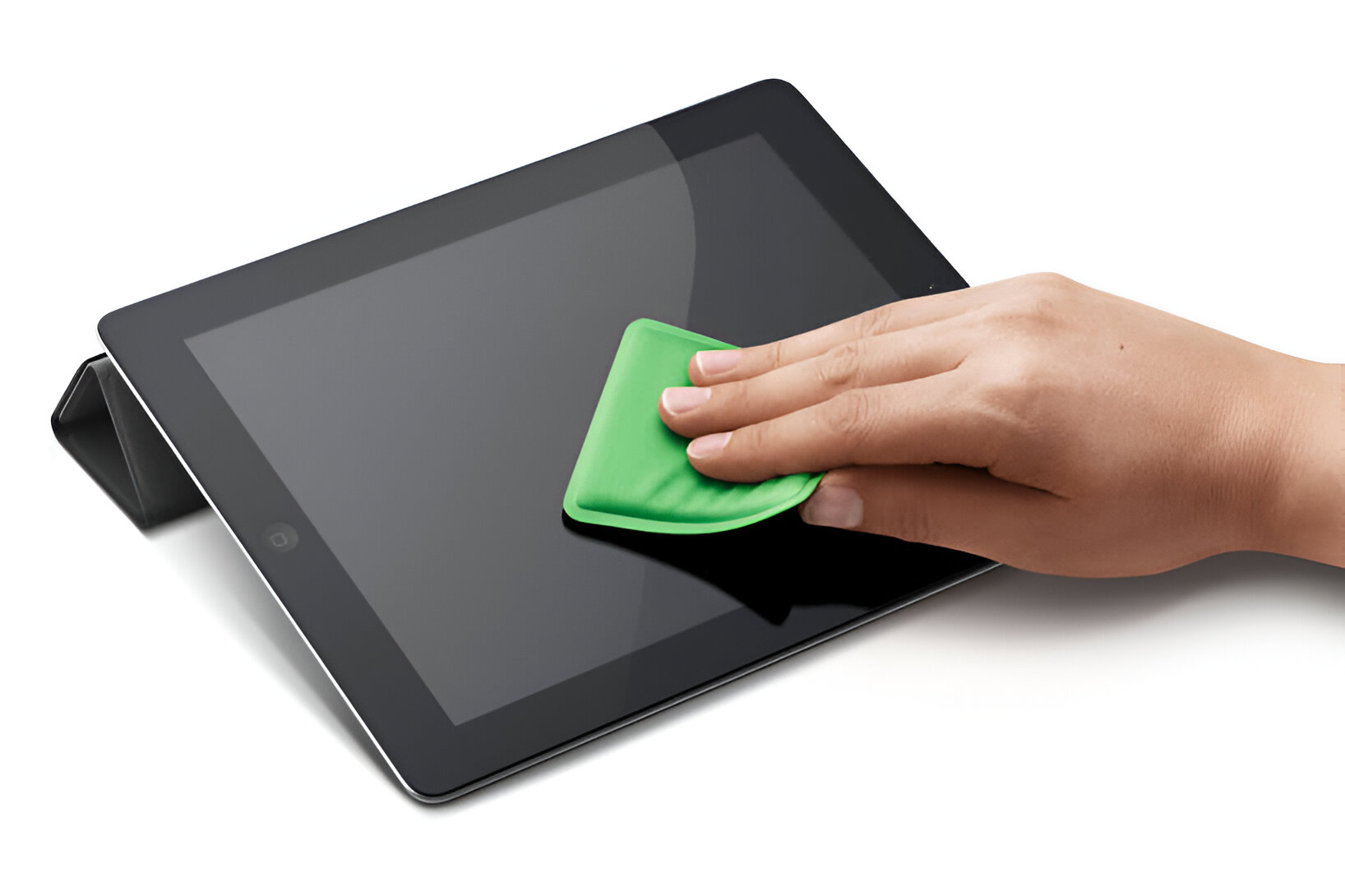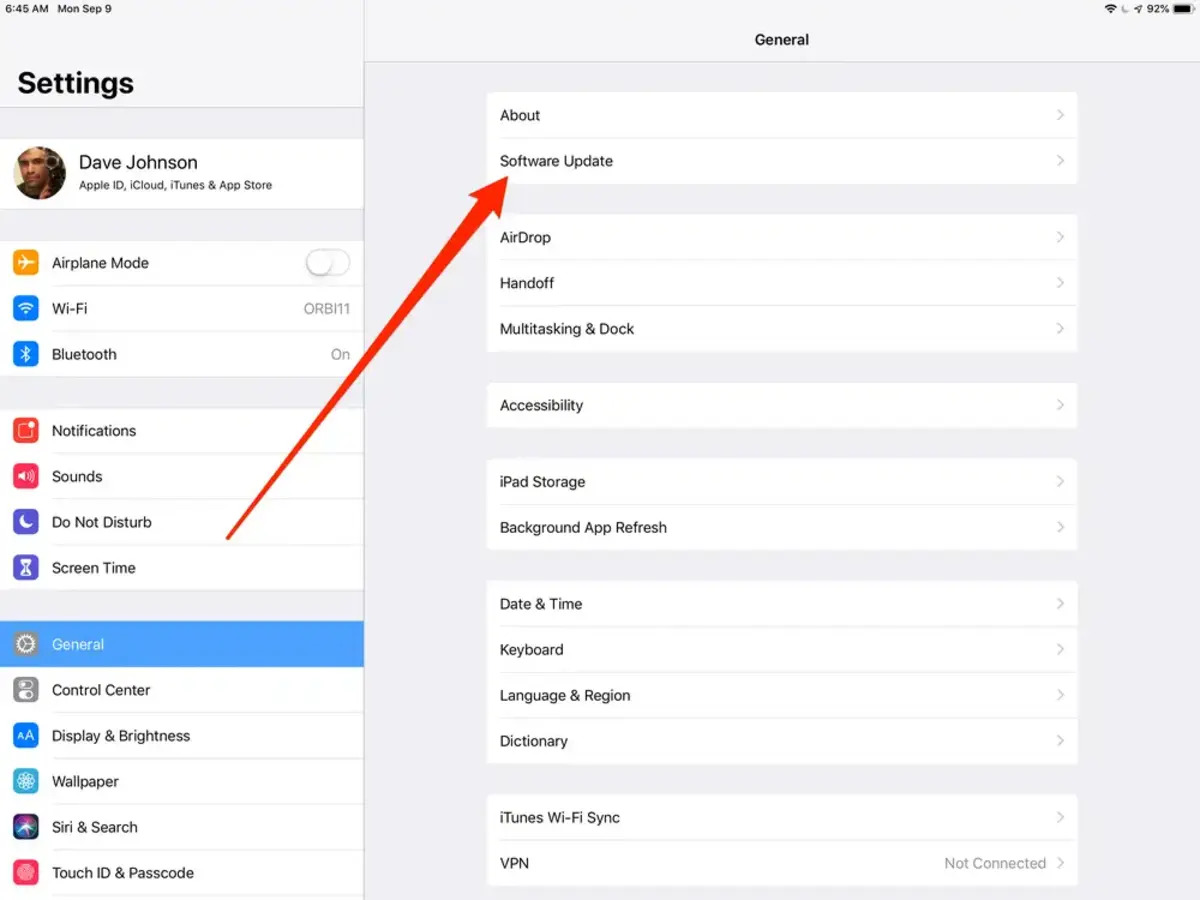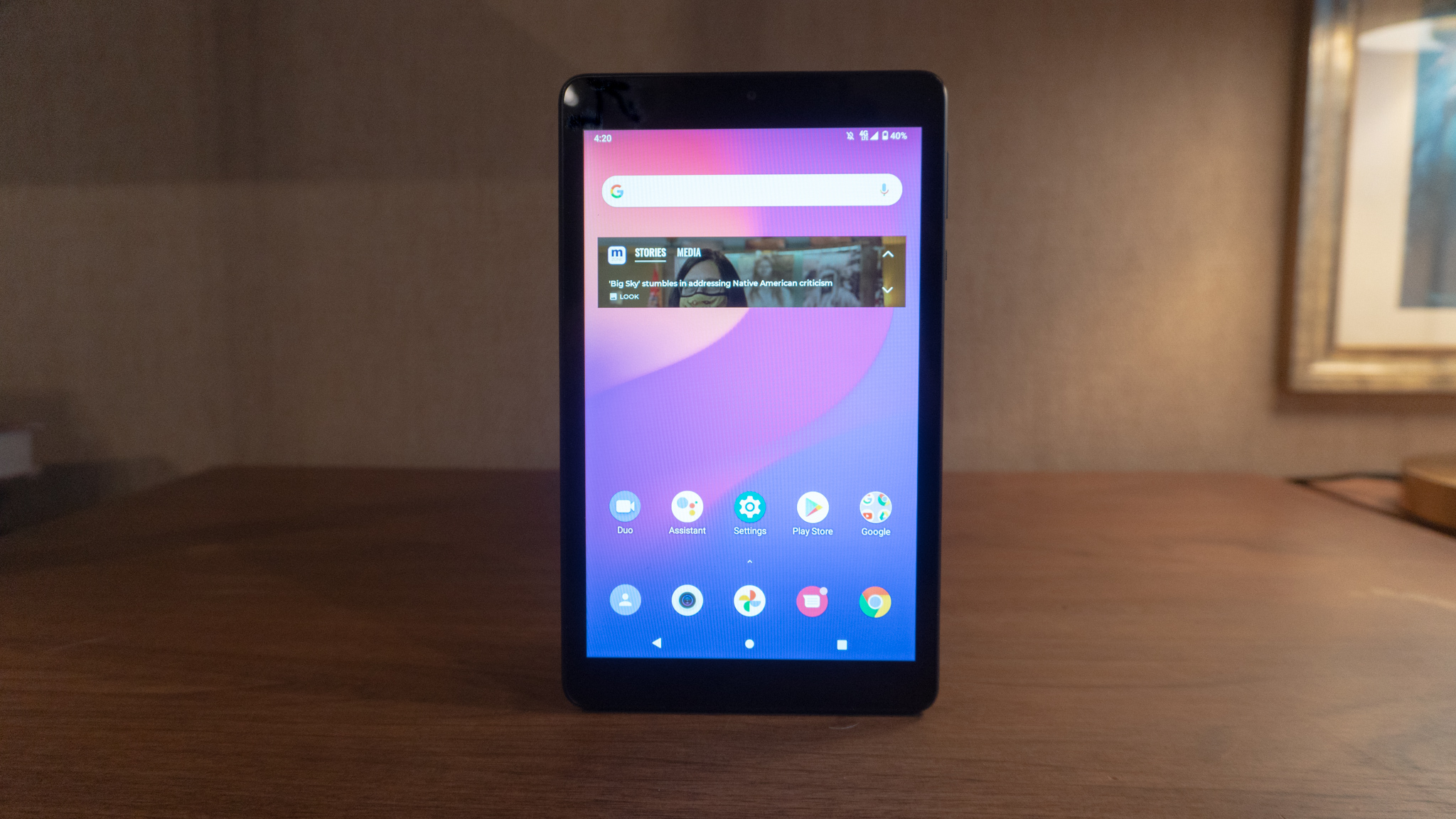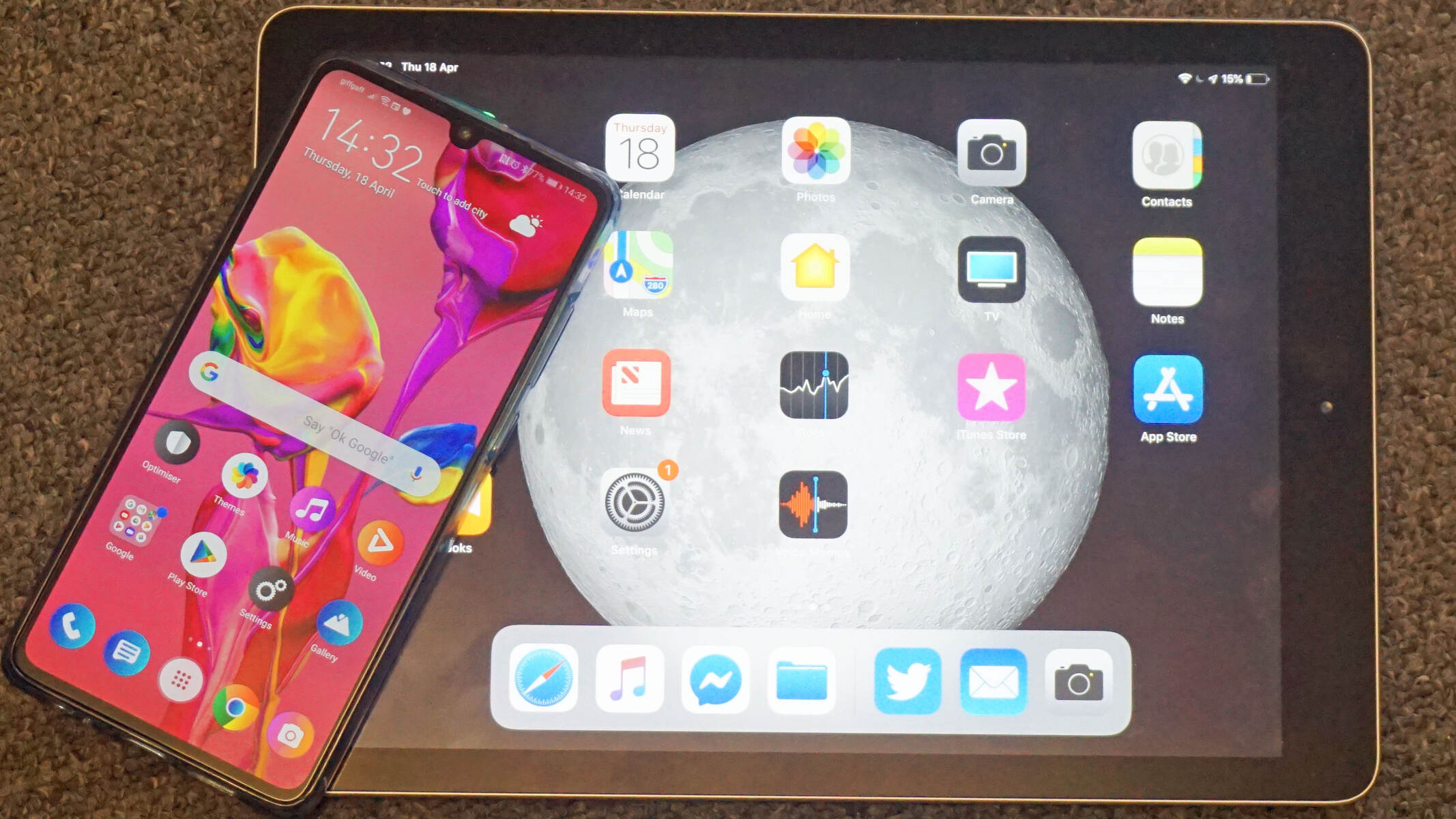Introduction
Welcome to our guide on how to improve your tablet’s battery life. Tablets have become an essential part of our daily lives, serving as our go-to devices for browsing the internet, watching videos, playing games, and staying connected. However, one of the common challenges users face is the limited battery life of their tablets. Nothing is more frustrating than your tablet running out of battery when you need it the most.
In this article, we will explore a variety of tips and techniques that will help you optimize the battery life of your tablet, allowing you to use it for longer periods without worrying about constantly searching for a power outlet. From adjusting screen brightness and optimizing app settings to disabling unnecessary features and using battery-saving tools, we will cover everything you need to know to extend your tablet’s battery life.
We understand the importance of having a tablet that can keep up with your busy lifestyle. Whether you use your tablet for work, entertainment, or staying connected with friends and family, implementing these battery-saving strategies will help you make the most out of your device’s battery capacity.
It’s important to note that improving battery life involves making a few trade-offs. Some of the techniques mentioned may restrict certain functionality or limit background processes. However, by following these recommendations, you can easily strike a balance between battery optimization and device usability.
So, without further ado, let’s dive into the world of optimizing your tablet’s battery life and ensure that you never run out of power when you need it most.
Adjust Screen Brightness
One of the simplest and most effective ways to improve your tablet’s battery life is to adjust the screen brightness. By reducing the brightness level, you can significantly reduce the amount of power consumed by the display.
Most tablets have an automatic brightness setting that adjusts the screen brightness according to the ambient lighting conditions. While this feature can be convenient, it may also consume more battery power than necessary. To optimize battery life, manually adjust the brightness to a level that is comfortable for your eyes but not excessively bright.
Lowering the screen brightness not only conserves battery power but also reduces eye strain, especially when using the tablet for an extended period. This can be particularly beneficial when using your tablet in darker environments, such as when watching a movie or reading an e-book.
To adjust the screen brightness on your tablet, go to the settings menu and locate the display settings. From there, you can easily slide the brightness bar to the desired level. Alternatively, some tablets also offer a quick-access brightness slider in the notification panel for easy and convenient adjustment.
It’s important to find the right balance between brightness and usability. Too low, and the screen may become difficult to read, while too high, and it will drain the battery faster. Experiment with different brightness levels to find the optimal setting for your needs and preferences.
Additionally, some tablets feature an auto-sleep function that automatically turns off the display after a specified period of inactivity. Enabling this feature can help conserve battery power, especially if you frequently forget to manually turn off the screen when not in use.
By adjusting the screen brightness and utilizing the auto-sleep function, you can make a significant impact on your tablet’s battery life without sacrificing the visual experience. Take the time to find the brightness level that works best for you, and you’ll notice a noticeable improvement in how long your tablet’s battery lasts.
Turn Off Background App Refresh
Background app refresh is a feature that allows apps to update and fetch new data in the background, even when you’re not actively using them. While this feature can provide you with the latest information from your favorite apps, it can also drain your tablet’s battery by constantly running processes in the background.
To improve your tablet’s battery life, it’s advisable to turn off background app refresh for apps that you don’t necessarily need to update in real-time. Social media apps, news aggregators, and other apps that constantly push notifications are the primary culprits when it comes to consuming battery power in the background.
To disable background app refresh, navigate to your tablet’s settings and find the “Background App Refresh” option. From there, you can either disable it entirely or choose specific apps to restrict from refreshing in the background.
Keep in mind that disabling background app refresh may partially limit the functionality of certain apps. For example, you may not receive push notifications in real-time or have the latest updates from your social media feed readily available. However, it is a trade-off that you can make to significantly extend your tablet’s battery life.
If you rely on certain apps that require background updating, consider choosing specific apps that truly need this feature and disable it for the rest. Prioritize the apps that are essential for your day-to-day activities and allow them to refresh in the background while disabling it for less important or frequently used apps.
By turning off background app refresh, you’re effectively preventing apps from consuming unnecessary battery power when you’re not actively using them. This simple tweak can go a long way in improving your tablet’s battery life and ensuring that your device lasts longer throughout the day.
Disable Push Email
Push email is a feature that automatically delivers new email messages to your tablet in real-time. While it can be convenient to receive email notifications as soon as they arrive, it can also have a significant impact on your tablet’s battery life, especially if you receive a high volume of emails throughout the day.
When push email is enabled, your tablet constantly stays connected to the mail server, waiting for new messages to arrive. This continuous background activity can drain the battery quickly, especially if you have multiple email accounts and receive a constant stream of messages.
To optimize battery life, consider disabling push email and changing the email fetch settings to manually or fetch less frequently. Manual fetch allows you to manually check for new email messages, while fetching less frequently, such as every 15 or 30 minutes, minimizes the impact on battery life.
To adjust email fetch settings, go to the settings menu on your tablet and find the email settings. From there, navigate to the specific email account and explore the options related to email fetching or syncing. You may need to consult the user manual or search online for specific instructions based on the email provider or app you are using.
By switching from push email to manual or less frequent fetching, your tablet will not constantly communicate with the mail server, resulting in reduced battery consumption. While you may not receive new email notifications immediately, you can still manually check for new messages whenever you open the email app.
It’s worth noting that disabling push email can also have the added benefit of reducing distractions and allowing you to focus on tasks without being constantly interrupted by email notifications. By checking your email at specific intervals, you can allocate dedicated time for managing your inbox and maintain better productivity.
Take control of your tablet’s battery life by disabling push email and adjusting your email fetch settings. By doing so, you can strike a balance between staying connected and conserving battery power, ensuring that your tablet’s battery lasts longer throughout the day.
Close Unused Apps
One common habit that many tablet users have is leaving multiple apps open in the background, even when they’re not actively using them. However, keeping unused apps running in the background can have a negative impact on your tablet’s battery life.
Each app that remains open in the background continues to consume system resources and may even run background processes or refresh data, leading to increased battery usage. By closing unused apps, you can free up system resources and minimize the drain on your tablet’s battery.
To close unused apps, you can utilize the app switcher or recent apps menu, typically accessible through a gesture or button on your tablet. On most devices, you can swipe up from the bottom of the screen or press a dedicated button to access the app switcher. From there, you can swipe left or right to navigate through the open apps and swipe up or tap the close button to close them.
It’s important to note that closing apps in the background does not necessarily mean that you are fully exiting the app. Most modern operating systems have built-in mechanisms that suspend inactive apps, effectively minimizing their impact on battery life. However, closing unused apps ensures that they are not actively consuming system resources and potentially draining the battery.
Some users worry that closing and reopening apps frequently can lead to reduced performance or slower app launch times. While this may have been the case with older devices, modern tablets are designed to handle multitasking efficiently and can quickly resume apps from their suspended state without significant delays.
Make it a habit to periodically check your app switcher and close any apps that you haven’t used for a while or no longer need. By doing so, you can optimize your tablet’s battery life and ensure that system resources are allocated to the apps you actively use, rather than being wasted on unnecessary background processes.
Remember that closing unused apps is not a one-time fix but rather an ongoing practice. Get into the habit of regularly closing apps that you no longer need, and you’ll notice an improvement in your tablet’s performance and battery life.
Use Airplane Mode When Not Connected to Wi-Fi
Using Airplane mode on your tablet when you’re not connected to Wi-Fi or don’t require cellular connectivity can significantly extend your device’s battery life. Airplane mode disables all wireless connections, including Wi-Fi, cellular data, Bluetooth, and GPS, reducing the power consumption of your tablet’s radio components.
When your tablet is in Airplane mode, it stops constantly searching for Wi-Fi networks or cellular signals, which can be energy-intensive processes. By disabling these connections, you effectively minimize the energy drain caused by wireless communication, allowing your tablet’s battery to last longer.
To enable Airplane mode on your tablet, you can either swipe down from the top of the screen and tap the Airplane mode icon in the quick settings panel or go to the settings menu and toggle on Airplane mode. Keep in mind that enabling Airplane mode will disconnect you from the internet and prevent incoming calls and messages while it is activated.
If you’re not actively using the internet or don’t need cellular connectivity, such as when you’re in an area with no Wi-Fi access, commuting, or in situations where conserving battery life is a priority, turning on Airplane mode can be an effective strategy.
Moreover, Airplane mode can be particularly useful when traveling to areas with weak or no cellular coverage. In such scenarios, your tablet may continuously search for a signal, leading to excessive battery drainage. By activating Airplane mode, you can prevent this unnecessary searching and preserve battery life for more important tasks.
It’s important to note that even in Airplane mode, you can manually re-enable specific features like Wi-Fi or Bluetooth if necessary. For instance, you can turn on Wi-Fi while in Airplane mode if you want to connect to a known Wi-Fi network without using cellular data.
By using Airplane mode judiciously when you’re not connected to Wi-Fi or don’t require wireless connectivity, you can significantly extend your tablet’s battery life. Incorporate this simple habit into your routine, and you’ll find that your tablet’s battery lasts longer, giving you more time to enjoy your device.
Limit Notifications
Notifications can be a constant source of distractions on your tablet, with each notification causing the screen to light up and potentially draining your battery. Limiting notifications can not only help you stay focused but also improve your tablet’s battery life.
Every app on your tablet has its own notification settings, allowing you to customize which types of notifications you receive and how they are displayed. By selectively enabling only the most important notifications, you can reduce the number of times your tablet’s screen needs to light up or vibrate, thus conserving battery power.
To manage notifications on your tablet, go to the settings menu and navigate to the “Notifications” section. From there, you can individually review and adjust the notification settings for each app installed on your device.
Begin by assessing which apps truly require real-time notifications and are essential for your productivity or personal needs. For instance, messaging apps and important email accounts may be a priority, while game notifications or social media updates may not be as critical.
Once you’ve identified the apps that deserve your immediate attention, configure the notification settings accordingly. Consider disabling notifications from apps that are not time-sensitive or can be checked manually at your convenience.
Additionally, you can choose to display notifications in a less intrusive manner, such as using banners or badges instead of full-screen alerts or vibrations. This reduces the amount of battery power consumed when a notification arrives.
Furthermore, you may find options to customize the sound, vibrations, or LED notifications for each app. Adjusting these settings can help you distinguish between important notifications and less urgent ones, allowing you to prioritize your attention accordingly.
By limiting notifications to only the most essential ones, you can prevent unnecessary battery drain caused by frequent screen activations. Not only does this improve your tablet’s battery life but it also helps promote mindfulness and a less distracting digital experience.
Take control of your tablet’s notifications and customize them to suit your needs. By doing so, you’ll find that your tablet’s battery lasts longer, and you’ll be able to focus on what matters most without constant interruptions.
Reduce Screen Timeout
The screen timeout setting on your tablet determines how long the display remains active after a period of inactivity. By reducing the screen timeout duration, you can conserve battery power by ensuring that the screen turns off quickly when not in use.
When the screen timeout is set to a longer duration, the display will continue to consume battery power even when you’re not actively using your tablet. This becomes particularly noticeable if you frequently leave your tablet idle without turning off the screen.
To adjust the screen timeout on your tablet, go to the settings menu and look for the display or screen settings. From there, you can choose the desired timeout duration, typically ranging from a few seconds to several minutes.
If you’re concerned about battery life, it’s advisable to set a shorter screen timeout duration. A timeout duration of around 30 seconds to 1 minute is generally sufficient for most users, ensuring that the display turns off quickly when not in use.
By reducing the screen timeout duration, you encourage yourself to actively interact with your tablet, turning off the screen when it’s not needed. This habit not only helps conserve battery power but also prolongs the overall lifespan of the display.
Additionally, consider enabling the automatic lock feature on your tablet. This ensures that the screen automatically locks after a certain period of inactivity, requiring a passcode or biometric authentication to unlock. The combination of a shorter screen timeout and automatic lock adds an extra layer of security while maximizing battery efficiency.
While a shorter screen timeout may require you to unlock your tablet more frequently, it’s a trade-off that leads to noticeable energy savings. It’s worth the effort to train yourself to manually lock your tablet or utilize the automatic lock feature when you’re not actively using the device.
By reducing the screen timeout duration and enabling automatic lock, you can prevent unnecessary battery drain caused by the display remaining active for extended periods of inactivity. Embrace these energy-saving practices, and you’ll be able to enjoy longer battery life from your tablet.
Disable Location Services
Location services on your tablet enable various apps to access and use your device’s GPS, Wi-Fi, and cellular data to determine your precise geographical location. While this functionality can be useful for navigation, mapping, and location-based services, it can also consume a significant amount of battery power.
Unless you require location-based functionalities in specific apps, it’s advisable to disable location services or restrict them only to apps that truly need them. By doing so, you can conserve battery power by preventing unnecessary GPS and data usage.
To disable location services on your tablet, navigate to the settings menu and find the “Location” or “Privacy” section. From there, you can toggle off the location services entirely or customize the settings for each app individually.
Consider reviewing the list of apps that have access to your device’s location and determine which ones truly require this information. For example, navigation apps and mapping services may be necessary to have access to your location, while other apps like social media or shopping apps may not need real-time location tracking.
Aside from disabling location services entirely, some devices offer the option to use battery-saving mode for location services. This mode uses less frequent location updates, conserving battery power while still providing a general sense of your location to apps that require it.
Keep in mind that disabling or limiting location services may temporarily affect the functionality or accuracy of apps that rely on this information. However, the impact on battery life is often well worth the trade-off, especially if you don’t rely heavily on location-based services.
If you need to use location services for specific apps but want to minimize battery consumption, consider enabling location services only when the app is open and actively in use. This way, you can enjoy the benefits of location-based features without the constant drain on your tablet’s battery.
By disabling or limiting location services on your tablet, you can significantly reduce battery consumption associated with GPS and data usage. Take control of your tablet’s battery life by reviewing and adjusting the location settings for your apps, ensuring that location services are only enabled when truly necessary.
Use Wi-Fi Instead of Cellular Data
Using Wi-Fi instead of cellular data on your tablet is not only cost-effective but can also help extend your device’s battery life. When connected to Wi-Fi, your tablet relies on an internet connection that doesn’t require the use of cellular antennas, which are notorious for draining battery power.
When you’re at home, work, or any location with a Wi-Fi network available, it’s advisable to switch off your tablet’s cellular data and connect to the Wi-Fi network instead. Wi-Fi connections typically provide faster internet speeds and consume less battery power compared to cellular data.
To connect to a Wi-Fi network, go to the settings menu on your tablet and navigate to the “Wi-Fi” section. From there, you can scan for available networks and connect to a preferred network by tapping on it.
By utilizing Wi-Fi for internet connectivity, your tablet’s cellular radio does not have to constantly search for and maintain a cellular signal. This significantly reduces battery consumption, allowing your device to last longer when connected to Wi-Fi networks.
Furthermore, Wi-Fi connections are more stable and reliable compared to cellular data, especially in areas with weak cellular coverage. When your tablet struggles to maintain a cellular connection, it consumes additional battery power to stay connected or search for a better signal. By using Wi-Fi in such situations, you can avoid unnecessary battery drain.
However, it’s important to note that enabling Wi-Fi on your tablet means that it will actively search for and connect to available networks. To further optimize battery life, consider turning off Wi-Fi when you’re not in range of a known network or don’t require internet access at the moment.
Additionally, be mindful of the Wi-Fi network you connect to and ensure you’re connecting to a secure and trusted network. Public Wi-Fi networks, such as those found in cafes, airports, or libraries, may carry security risks. Always exercise caution and connect to networks with password protection or use a virtual private network (VPN) for added security.
By prioritizing Wi-Fi over cellular data whenever possible, you can enjoy faster internet speeds and conserve your tablet’s battery power. Take advantage of Wi-Fi networks in your daily routine and limit your reliance on cellular data, resulting in extended battery life for your tablet.
Disable Auto-Updates
Auto-updates are a convenient feature that ensures your tablet’s apps and system software are always up to date with the latest bug fixes, security patches, and new features. However, the process of automatically downloading and installing updates can consume a significant amount of battery power, especially if you have numerous apps installed on your tablet.
To improve your tablet’s battery life, it’s worth considering disabling auto-updates and manually updating your apps and system software when it’s convenient for you. This allows you to control when and how updates are installed, minimizing the battery drain caused by background downloads and installations.
To disable auto-updates on your tablet, go to the settings menu and find the “App Updates” or “Auto-Update” section. From there, you can choose to disable auto-updates entirely or customize the settings to allow updates only when connected to Wi-Fi or only for specific apps.
By disabling auto-updates, you prevent your tablet from constantly checking for new updates and downloading them in the background, which can consume valuable battery power. Instead, you can manually initiate updates when your tablet is connected to a power source or Wi-Fi network.
Manually updating apps and system software allows you to be selective about the updates you install and prioritize the ones that are essential or beneficial to you. It also provides an opportunity to review the release notes and determine if any changes could impact your device’s performance or compatibility with other apps.
Keep in mind that while delaying updates may seem counterintuitive, it offers the advantage of giving app developers time to address and fix any potential issues that may arise. By monitoring updates manually, you have more control over the stability and functionality of your tablet.
As a best practice, it’s a good idea to periodically check for updates and install them when you have a stable internet connection and sufficient battery power. Most app stores have an option to manually check for updates or provide a notification when updates are available.
By disabling auto-updates and manually managing app and system software updates, you can prevent unnecessary battery drain and ensure that your tablet’s battery power is preserved for essential tasks and activities.
Disable Vibrations
Vibrations are a useful feature on tablets for providing haptic feedback and alerting you to incoming calls, messages, or notifications. However, vibrations can consume a significant amount of battery power due to the physical movement of internal components.
To optimize your tablet’s battery life, consider disabling vibrations or reducing their usage to conserve battery power. By doing so, you can still receive notifications and alerts, but without the additional energy consumption caused by vibrations.
To disable vibrations on your tablet, go to the settings menu and find the “Sound” or “Vibration” section. From there, you can toggle off vibrations for notifications, calls, and other system events. Some tablets may offer separate vibration settings for different types of notifications, allowing you to customize the behavior to your preference.
You may find vibrations particularly useful for incoming calls, as they provide tactile feedback even when your tablet is on silent mode. However, if you’re concerned about battery power, consider disabling vibrations for other notifications, such as messages, app notifications, or keyboard taps.
Keep in mind that disabling vibrations may require visual cues or audible alerts for notifications, so ensure that you have alternative methods of receiving alerts in place. You can opt for visual indicators, LED notifications, or customized sound alerts to compensate for the lack of vibrations.
Disabling vibrations not only helps conserve your tablet’s battery power but also reduces distractions and noise in your surroundings. It allows for a quieter and more focused environment, particularly in settings where it’s important to maintain a low profile or minimize disruptions.
However, it’s also worth mentioning that the impact of vibrations on battery life may vary depending on your tablet’s hardware design and vibration motor efficiency. If you notice significant battery drain even with vibrations disabled, it may be a good idea to consult your tablet’s user manual or seek assistance from the manufacturer’s support.
By disabling vibrations or using them sparingly, you can extend your tablet’s battery life and create a more peaceful environment. Evaluate the necessity of vibrations for your personal usage and adjust the settings accordingly to strike a balance between functionality and battery optimization.
Optimize App Settings
Optimizing app settings is an effective way to improve your tablet’s battery life. Many apps have settings that allow you to customize their behavior, including options that can help conserve battery power. By reviewing and adjusting these settings, you can minimize unnecessary background activities and reduce battery drain caused by apps running in the background.
To optimize app settings on your tablet, explore the settings menu of each individual app. Look for options related to background activity, data syncing, push notifications, and other features that may impact battery life. Keep in mind that the availability and location of these settings may vary depending on the app.
Start by evaluating the apps you use frequently and consider which ones actively utilize real-time updates, background refresh, or continuous data syncing. For example, social media or news apps may constantly fetch updates, whereas an e-reader app may not require frequent syncing.
For apps that are not time-sensitive or require immediate updates, you can disable background refresh or set longer intervals for data syncing. This reduces the constant battery consumption caused by apps running in the background or syncing data in real-time.
Additionally, you can review and individualize the notification settings for each app, choosing to enable or disable specific types of notifications. For example, you may choose to receive notifications for direct messages but disable notifications for likes or comments in a social media app.
Consider disabling unnecessary app permissions as well. Some apps may request access to features like your camera, microphone, or location, even if they don’t need them to function properly. Restricting these permissions can help preserve battery power and enhance your privacy.
Furthermore, some apps have a dark mode or night mode feature that utilizes a darker color palette. Dark mode can help conserve battery power on devices with OLED or AMOLED screens, as these screens use less power to display darker colors.
Regularly reviewing and optimizing app settings can go a long way in improving your tablet’s battery life. It allows you to tailor the behavior of each app to your specific needs, minimizing unnecessary battery drain caused by default settings.
Keep in mind that the impact on battery life may vary depending on the app’s design and functionality. Some apps are inherently more battery-efficient than others. If you notice excessive battery drain from a specific app, even after adjusting its settings, it may be worth considering an alternative app or contacting the app’s developer for additional support.
Take the time to examine and fine-tune the settings of the apps you use regularly. By optimizing app settings, you can maximize your tablet’s battery life and ensure that battery power is allocated where it’s most needed.
Enable Low Power Mode
Enabling the low power mode feature on your tablet is a simple yet effective way to extend its battery life when you need it the most. Low power mode adjusts various settings and reduces background activities to conserve energy, allowing you to use your tablet for longer periods without worrying about running out of battery.
When low power mode is enabled, your tablet limits or disables certain features that consume a significant amount of battery power. This typically includes reducing screen brightness, disabling background app refresh, and minimizing system animations and visual effects.
To enable low power mode on your tablet, go to the settings menu and find the “Battery” or “Power” section. From there, you can toggle on the low power mode option. On some tablets, you may have the option to customize specific settings within low power mode.
When low power mode is activated, your tablet’s performance may be slightly impacted, as it prioritizes energy conservation over speed and responsiveness. However, for most day-to-day tasks, the difference in performance is negligible, and the benefits of extended battery life outweigh any minor trade-offs.
Low power mode is particularly useful when you’re in situations where charging your tablet is not immediately possible, such as during long commutes, flights, or outdoor activities. By enabling this mode, you can stretch your tablet’s battery life and ensure it lasts throughout the day.
It’s important to note that low power mode may automatically disable or limit certain functionalities, such as email fetch, background app updates, and automatic downloads. As a result, you may need to manually check for updates, refresh emails, or download content during this mode.
If your tablet doesn’t have a built-in low power mode feature, you can manually implement some of its effects by adjusting settings like screen brightness, disabling unnecessary background activities, and minimizing system animations and visual effects as mentioned earlier.
Take advantage of low power mode whenever you need to maximize your tablet’s battery life. Whether you’re in a low battery situation or simply want to optimize power consumption, enabling low power mode can prolong your tablet’s usage and offer peace of mind knowing that you have more time before needing to recharge.
Turn Off Automatic Downloads
Automatic downloads can quickly drain your tablet’s battery power as they constantly retrieve and install updates, app downloads, and media files in the background. Disabling automatic downloads can help conserve battery life by preventing these downloads from running without your explicit permission.
To turn off automatic downloads on your tablet, go to the settings menu and find the “App Store” or “Play Store” section. From there, you can disable automatic downloads for apps, updates, and media.
By disabling automatic app downloads, your tablet won’t automatically download and install updates or new app versions. Instead, you’ll have the option to manually update apps when you’re connected to Wi-Fi and have sufficient battery power.
Disabling automatic updates for media files, such as music, podcasts, or videos, prevents them from being automatically downloaded and stored on your tablet’s storage. You can choose to download media files manually when you’re connected to Wi-Fi or a power source.
This feature is particularly useful if you have limited storage on your tablet or prefer to have more control over which files are stored locally. By preventing automatic downloads of media files, you can save storage space and avoid unnecessary battery drain.
Furthermore, disabling automatic downloads can also ensure that your tablet’s resources are not tied up in the constant download and installation processes. This allows your tablet to allocate its processing power and battery usage to tasks that you actively prioritize and need.
However, it’s vital to stay vigilant and manually check for updates and download new content periodically. Remember that updating apps regularly ensures that you have the latest security enhancements, bug fixes, and new features. Downloading media files when connected to Wi-Fi saves your cellular data and helps you manage your storage effectively.
Take control of your tablet’s downloads and delay them until you’re ready. By turning off automatic downloads, you can conserve battery power, manage your storage efficiently, and stay in control of the apps and media files that are installed on your tablet.
Clear Cache and Cookies
Clearing the cache and cookies of your tablet’s web browser is a simple yet effective way to improve its performance and extend battery life. The cache and cookies stored by your browser help to speed up web browsing by storing temporary data and information about websites you visit. However, over time, these files can accumulate and impact both the performance and the battery life of your tablet.
To clear the cache and cookies on your tablet, open your browser’s settings menu and navigate to the privacy or browsing data section. From there, you should find options to clear the cache, cookies, or browsing history. Depending on the browser you use, the exact location and wording may vary.
Clearing the cache removes temporary files that are no longer needed, freeing up storage space on your tablet. These files can take up a significant amount of space over time, which can impact your tablet’s overall performance and battery life. Additionally, clearing cookies helps to eliminate stored data from websites, improving privacy and reducing the amount of data your tablet needs to process while browsing.
Regularly clearing the cache and cookies of your browser can lead to faster loading times for web pages, smoother browsing experiences, and reduced battery consumption. This is because your tablet’s browser won’t have to retrieve and process as much data from the cache or deal with the potentially bulky cookies stored on your device.
Keep in mind that clearing the cache and cookies will sign you out of websites, deleting any saved passwords or preferences you may have. However, this is a small inconvenience compared to the benefits of improved performance and extended battery life.
Set a routine to clear the cache and cookies on your tablet periodically, especially if you find that web browsing has become sluggish or your tablet’s battery drains quickly while browsing. By doing so, you can maintain your tablet’s optimal performance and ensure that it runs smoothly and efficiently.
In addition to clearing the cache and cookies, consider using private browsing or incognito mode on your browser, which doesn’t save browsing history, cache, or cookies. This can further enhance your privacy and reduce the storage space and battery consumption associated with browsing activities.
Take control of your tablet’s browser by clearing its cache and cookies regularly. By doing so, you can improve performance, enhance privacy, and ultimately extend your tablet’s battery life.
Keep Your Tablet Updated
Keeping your tablet’s operating system and apps up to date is crucial not only for performance and security reasons but also for optimizing its battery life. Developers regularly release updates that may include improvements to power management and overall efficiency. By staying on top of these updates, you can ensure that your tablet is running the latest versions of software that are optimized for better battery performance.
Software updates often include bug fixes, enhancements, and optimizations that can address battery drain issues. These updates may introduce new algorithms or system-level improvements that help optimize power usage and extend battery life. Therefore, it’s essential to regularly check for and install updates on your tablet.
To check for system updates, go to the settings menu on your tablet, navigate to the “System” or “About” section, and look for the option to check for updates. For individual app updates, visit your device’s app store (such as the App Store for iOS devices or Google Play Store for Android devices) and install any available updates for your installed apps.
Enabling automatic system updates on your tablet is recommended to ensure that you receive the latest software improvements as soon as they are available. This saves you the effort of manually checking for updates and ensures that your tablet is always running the most up-to-date software.
It’s worth mentioning that updates can result in improved battery management, new power-saving features, and optimizations that can contribute to longer battery life. By keeping your tablet updated, you can take advantage of these advancements and enjoy the benefits of a more efficient and longer-lasting device.
Additionally, staying up to date with security patches is crucial for protecting your tablet from vulnerabilities and potential threats. Security updates often include fixes for known vulnerabilities that could affect both your device’s performance and battery life. Therefore, by regularly updating your tablet, you ensure that it’s equipped with the latest security patches.
Remember to check for updates for both the operating system and the apps on your tablet. While system updates are typically more significant, app updates also play a role in improving performance and optimizing battery usage. Developers often release app updates to address any known issues, introduce new features, and, in some cases, enhance battery optimization.
By keeping your tablet’s operating system and apps updated, you not only benefit from improved performance and security, but you also maximize its battery life. Take the time to check for updates regularly, enable automatic updates if available, and stay informed about new software releases to ensure that your tablet is operating at its best.
Avoid Extreme Temperatures
Temperature can have a significant impact on your tablet’s battery life and overall performance. Both extremely hot and cold temperatures can affect the battery’s capacity and lifespan. It’s essential to be mindful of the environment in which you use and store your tablet to prevent any adverse effects on its battery.
Extreme heat can accelerate the degradation of your tablet’s battery. It causes the battery to work harder and can lead to faster depletion of its charge. Exposure to high temperatures, such as leaving your tablet in direct sunlight or a closed vehicle on a hot day, can result in permanent damage to the battery and shorten its overall lifespan.
Similarly, extremely cold temperatures can also have a negative impact on the battery performance. Low temperatures slow down the chemical reactions within the battery, which can cause the battery to drain faster and provide less power. In some cases, extreme cold can even cause temporary or permanent damage to the battery.
To protect your tablet’s battery from extreme temperatures, it’s advisable to avoid exposing it to direct sunlight or leaving it in a hot car, especially during the summer months. Whenever possible, try to operate your tablet in temperature-controlled environments to maintain optimal performance and battery life.
During colder temperatures, keep your tablet insulated, such as by storing it in a protective case or covering it with a cloth or insulating material. Avoid leaving your tablet unused in freezing conditions, as extreme cold can affect both the battery’s performance and the tablet’s internal components.
If you find yourself in a situation where your tablet has been exposed to extreme temperatures, allow it to return to a normal operating temperature before using or charging it. Rapid temperature changes can cause condensation, which can damage the internal components.
Lastly, if you plan to store your tablet for an extended period, it’s recommended to store it in a cool, dry place, away from direct sunlight and extreme temperatures. Ideally, the storage temperature should be within the manufacturer’s recommended range.
By being mindful of the temperature environment in which you use and store your tablet, you can preserve the battery’s performance and lifespan. Avoiding extreme heat and cold helps maintain the optimal functioning of the battery, ensuring that it delivers maximum power and lasts longer before requiring a recharge.
Use Battery Saving Apps and Tools
Battery saving apps and tools can be valuable assets in optimizing your tablet’s battery life. These apps and tools offer a range of features and functionalities designed to extend battery performance by managing power consumption and identifying battery-draining apps or settings.
There are numerous battery saving apps available for both iOS and Android devices. These apps typically provide features such as power-saving modes, battery usage analysis, and recommendations to optimize battery usage based on your usage patterns.
Battery saving apps often include power-saving modes or profiles that automatically adjust various settings on your tablet, such as screen brightness, CPU performance, and app behaviors. These modes can be customized or activated when the battery level reaches a certain threshold.
Some battery saving apps can also provide insight into the battery usage of individual apps, allowing you to identify and restrict power-hungry apps that may be draining your tablet’s battery unnecessarily. This feature helps you identify apps that are running in the background or using excessive system resources, enabling you to close or optimize them for better battery performance.
Furthermore, battery saving apps may include features like intelligent charging, which monitors the charging process and adjusts the charging rate to prolong battery lifespan. They may also provide notifications or reminders to unplug your tablet once it achieves a full charge to prevent overcharging.
In addition to dedicated battery saving apps, many operating systems offer built-in power-saving features. These features can be found in the settings menu of your tablet and may include options to limit background app activity, reduce system animations, or enable aggressive power-saving modes.
It’s important to note that while battery saving apps and tools can be helpful in optimizing battery performance, it’s crucial to choose reputable and well-reviewed apps from trusted sources. Be cautious of downloading apps that make extravagant claims or request unnecessary permissions.
Optimizing your tablet’s battery life may also involve utilizing built-in system tools to manage battery usage. For example, you can manually disable unnecessary connectivity features like Bluetooth and NFC when not in use. You can also adjust location settings to use power-saving options or restrict location access for select apps.
By utilizing battery saving apps and tools, you can take a proactive approach to optimizing your tablet’s battery life and ensuring that it lasts longer between charges. Whether through customizable power-saving modes, app usage analysis, or intelligent charging, these tools provide you with the flexibility and control to maximize your tablet’s battery performance.
Disable Live Wallpapers and Dynamic Backgrounds
Live wallpapers and dynamic backgrounds can add visual flair to your tablet’s home screen, but they can also impact battery life. These types of wallpapers are interactive and often require continuous rendering and animation, which can consume a significant amount of battery power.
If you’re looking to maximize your tablet’s battery life, it’s advisable to disable live wallpapers and opt for static, non-animated backgrounds instead. Static wallpapers require less processing power and battery usage since they don’t have to constantly refresh or animate.
To disable live wallpapers and dynamic backgrounds, go to the settings menu on your tablet and navigate to the “Display” or “Wallpapers” section. From there, select a static wallpaper or choose a pre-installed image as your new background.
Keep in mind that disabling live wallpapers doesn’t mean you can’t have visually appealing backgrounds. Many pre-loaded wallpapers or downloadable images still offer beautiful and captivating visuals without the need for continuous animation or interactivity.
By using static wallpapers, you not only preserve battery life but also potentially improve the overall performance of your tablet. With less power allocated to rendering and animating the wallpaper, your device’s resources can be dedicated to other tasks or processes.
Moreover, if you’re concerned about the visual appeal of your home screen, you can still personalize it by choosing high-quality static wallpapers that suit your style or interests. Many online platforms offer a wide range of stunning static wallpapers, ensuring that you can find something that reflects your taste.
To add variety to your home screen without sacrificing battery life, you can also explore widgets, app shortcuts, or icon packs to customize the appearance and functionality of your tablet’s interface.
Remember, disabling live wallpapers and dynamic backgrounds is a simple adjustment that can significantly impact your tablet’s battery life. By opting for static wallpapers, you conserve battery power and ensure that your tablet’s resources are efficiently allocated to tasks that matter most to you.
Keep Your Tablet Clean and Free of Dust and Debris
Maintaining a clean and dust-free tablet is not only important for hygiene and aesthetics but also for the overall performance and battery life of your device. Dust, dirt, and debris can accumulate on your tablet’s surface, vents, and ports, potentially impacting its cooling system and causing overheating, which in turn can negatively affect battery performance.
To ensure that your tablet operates optimally, follow these simple tips to keep it clean and free of dust and debris:
1. Use a microfiber cloth: Regularly wipe the screen, back, and sides of your tablet with a soft, lint-free microfiber cloth. This helps remove fingerprints, smudges, and dust particles that can interfere with screen visibility and hinder overall performance.
2. Avoid using harsh chemicals or abrasive materials: When cleaning your tablet, never use abrasive materials such as paper towels or rough cloths, as they can scratch the screen or other surfaces. Furthermore, avoid using harsh cleaning solutions or alcohol-based cleaners, as they can damage the protective coatings on your device.
3. Gently clean ports and vents: Dust and debris can accumulate in the charging port, speaker grills, and other openings of your tablet, impeding proper airflow and reducing the tablet’s cooling efficiency. Use a soft brush or gently blow compressed air to remove any debris from these areas. Be careful not to insert anything that may damage the ports.
4. Consider a protective case or cover: A protective case or cover not only safeguards your tablet from accidental drops or impacts but also helps minimize dust accumulation. Choose a case or cover that fits your tablet properly and provides access to all essential ports and buttons.
5. Store your tablet properly: When not in use, store your tablet in a clean, dust-free area away from excessive heat, moisture, or direct sunlight. Avoid storing it in places prone to dust accumulation, such as near open windows or on dusty surfaces.
By keeping your tablet clean and free of dust and debris, you ensure that its cooling system functions optimally, preventing unnecessary overheating and strain on the battery. Additionally, a clean tablet enhances screen visibility, touch sensitivity, and overall user experience.
Incorporate regular cleaning into your tablet maintenance routine. By taking a few minutes to clean your tablet periodically, you can extend its lifespan, optimize battery performance, and enjoy a cleaner and more enjoyable digital experience.
Conclusion
Optimizing the battery life of your tablet is crucial for ensuring that it remains functional and reliable throughout the day. By implementing the various tips and strategies mentioned in this guide, you can maximize your tablet’s battery performance and make the most out of its capabilities.
From adjusting screen brightness and disabling background app refresh to using Wi-Fi instead of cellular data and keeping your tablet clean, each tip contributes to conserving battery power and enhancing overall efficiency.
Remember to regularly check for software updates, including both operating system updates and app updates. These updates often contain important optimizations and improvements that can help alleviate battery drain and improve overall performance.
Additionally, explore the various battery-saving apps and tools available to further enhance your tablet’s battery life. These apps can provide valuable insights, customizable power-saving modes, and usage analysis to help you manage power consumption effectively.
By practicing good charging habits, avoiding extreme temperatures, and using static wallpapers instead of live wallpapers, you can ensure that your tablet’s battery remains healthier for longer, prolonging its lifespan and optimizing its performance.
Ultimately, the goal is to strike a balance between functionality and battery optimization. While it may not be possible or practical to implement every tip in every situation, incorporating as many as possible can go a long way in improving your tablet’s battery life and ensuring that it meets your needs and expectations.
By being mindful of how you use and care for your tablet, you can enjoy longer battery life, improved performance, and a more satisfying experience overall. Take the time to implement these tips and strategies, and make the most out of your tablet’s battery power every day.







